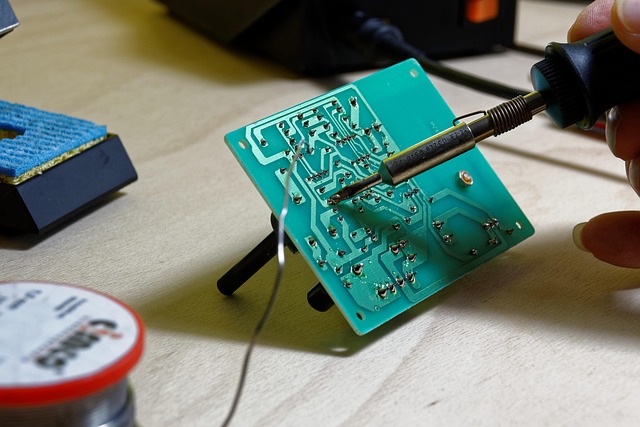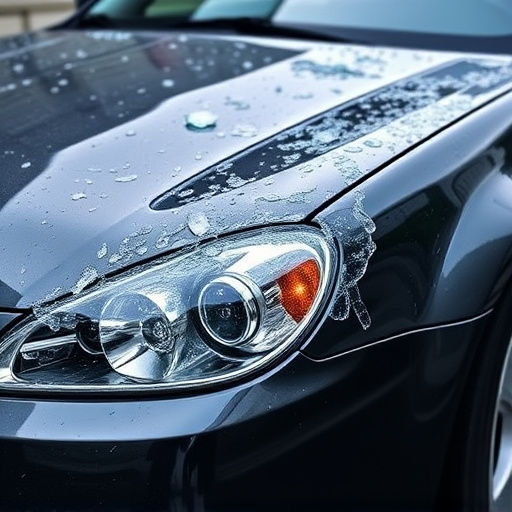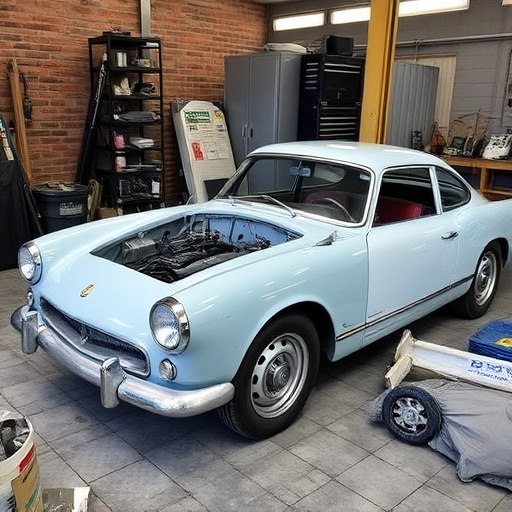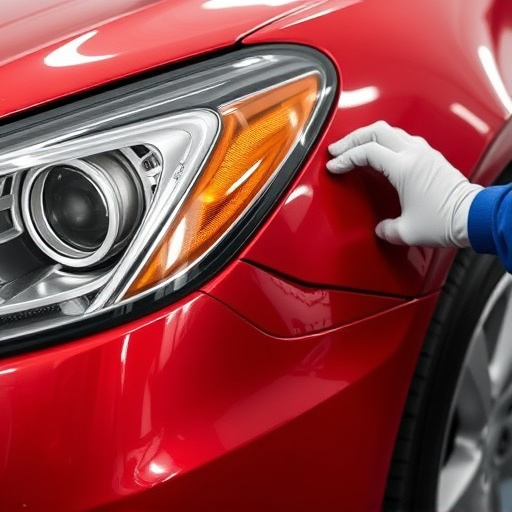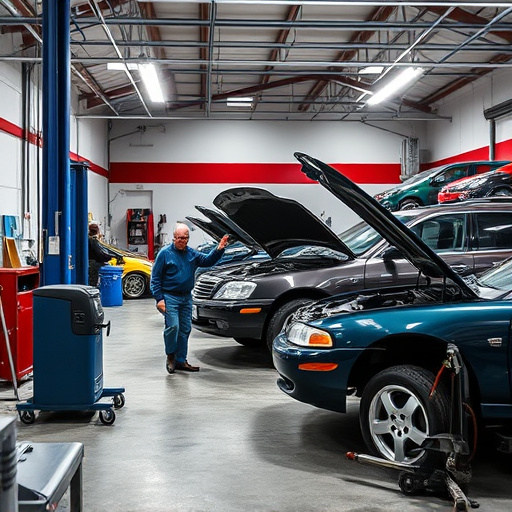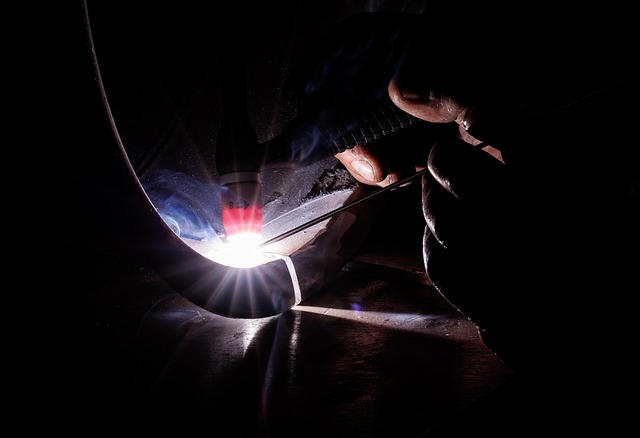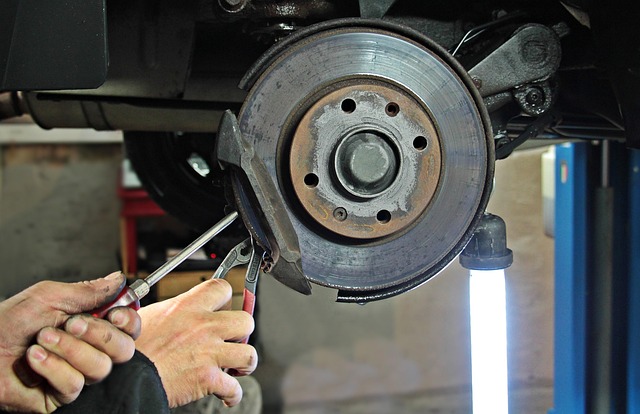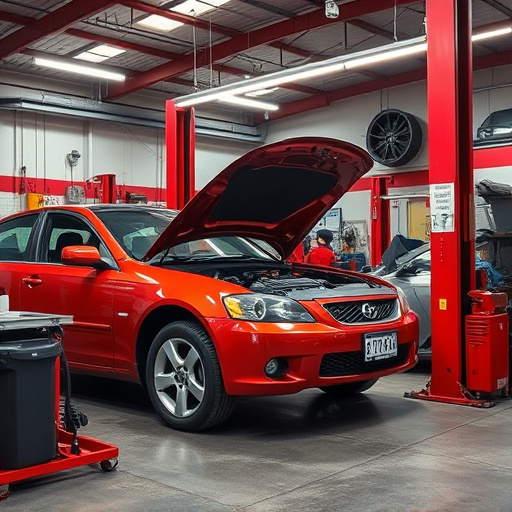Commercial vehicle repair requires tailored approaches based on vehicle type, from heavy-duty engines to routine van maintenance. A well-equipped toolkit with hand and specialized tools is vital for precision and efficiency. Common issues include engine, transmission, and electrical problems, resolved through visual inspections, diagnostic tools, and advanced systems like CAD for complex cases. Auto body repair ensures structural integrity, while bodywork services enhance aesthetics. Specialized services are key to maintaining commercial fleet reliability, safety, and operational efficiency.
Are you new to the world of commercial vehicle repair? This comprehensive guide is your starting point. From understanding diverse vehicle types and their specialized maintenance requirements to equipping yourself with essential tools, this guide has got you covered. Learn about common issues plaguing fleet vehicles and effective troubleshooting techniques. By the end, you’ll be ready to tackle minor repairs and maintain these powerful machines efficiently.
- Understanding Commercial Vehicle Types and Their Unique Needs
- Essential Tools and Equipment for Repairs
- Common Issues and Troubleshooting Techniques
Understanding Commercial Vehicle Types and Their Unique Needs
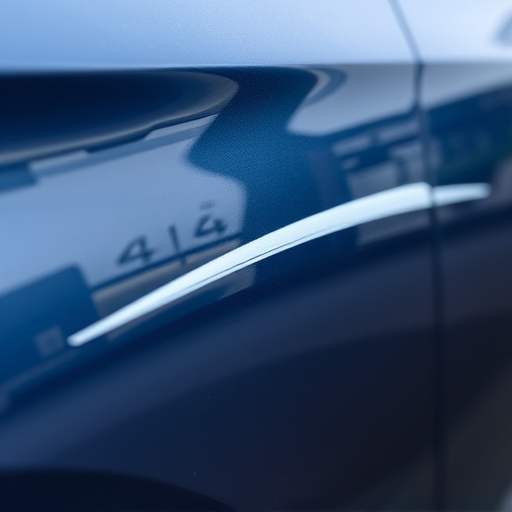
Commercial vehicles come in various types, each with distinct characteristics and operational requirements. From trucks and buses to vans and delivery vans, understanding these differences is crucial for effective commercial vehicle repair. Each type has its unique design features and specialized components that demand tailored care. For instance, heavy-duty trucks require robust engine maintenance and advanced diagnostics due to their high-performance needs, while smaller delivery vans may focus more on tire replacement and routine maintenance checks.
Recognizing these variations is essential for technicians providing automotive repair services. It ensures that repairs are not one-size-fits-all but rather customized to the specific vehicle type. Commercial vehicle owners should seek out specialized car bodywork services that cater to their unique needs, ensuring their fleet remains reliable and safe on the road, thereby enhancing operational efficiency in the commercial transport sector.
Essential Tools and Equipment for Repairs
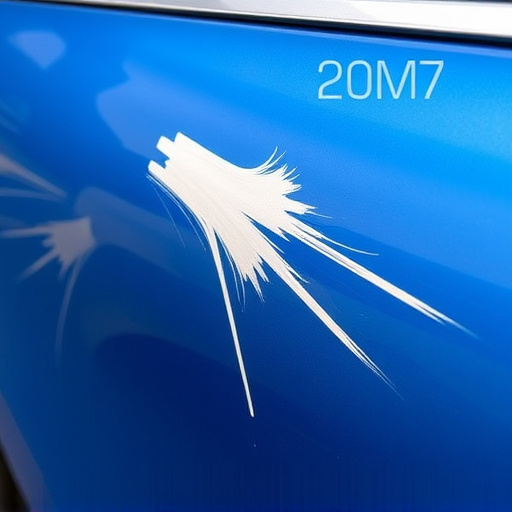
Before diving into the world of commercial vehicle repair, it’s crucial to equip yourself with the right tools and equipment. Essential for any novice mechanic, a well-stocked toolkit is the foundation of successful repairs. For commercial vehicles, this includes basic hand tools like wrenches, sockets, screwdrivers, and pliers, which are indispensable for tasks ranging from simple maintenance checks to more complex assembly.
Additionally, specific tools tailored for commercial vehicle repair are vital. These might include jack stands, specialized torque wrenches, and diagnostic scanners capable of reading modern vehicles’ electronic systems. Remember, the right tools can make even the most challenging repairs more manageable. Whether tackling a routine service check, handling minor accidents like hail damage repair, or performing intricate car body restoration on luxury brands like Mercedes Benz, having the appropriate equipment is key to ensuring precision and efficiency.
Common Issues and Troubleshooting Techniques
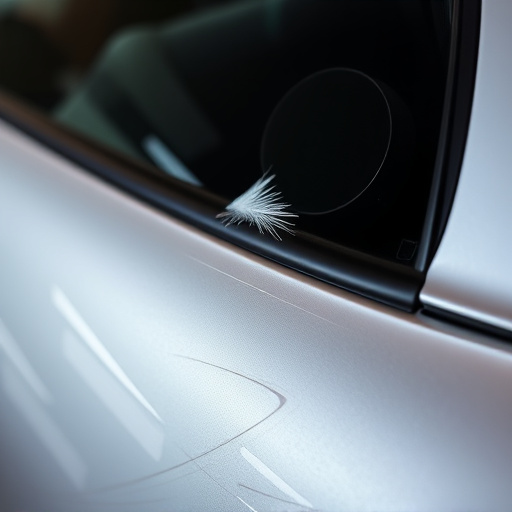
Common issues that plague commercial vehicles often include engine problems, transmission malfunctions, and faulty electrical systems. These are usually the first areas to inspect when troubleshooting. Engine issues can range from simple oil leaks to complex cylinder head repairs, while transmission troubles may involve fluid changes or even complete overhauls. Electrical problems might manifest as a dead battery, faulty lights, or a misfiring engine, requiring checks for loose connections and damaged components.
Troubleshooting these issues involves a systematic approach: start with visual inspections for damage or leaks, then move on to basic diagnostic tools like voltage testers and code readers. For more complex problems, specialized equipment such as frame straighteners and computer-aided diagnostics (CAD) systems are employed. Auto body repair techniques might be needed for structural damage, while car bodywork services can restore the vehicle’s aesthetic appeal. Frame straightening is a crucial step in ensuring the vehicle’s structural integrity after an accident or significant impact.
For those new to the world of commercial vehicle repair, this guide offers a solid foundation. By understanding different vehicle types, investing in essential tools, and familiarizing yourself with common issues, you’re well-equipped to tackle basic repairs and maintenance. Remember, safe and reliable operations depend on knowledgeable technicians. Keep learning, stay updated with industry trends, and always prioritize safety during repair processes. With dedication, you’ll become an expert in the field of commercial vehicle repair.
